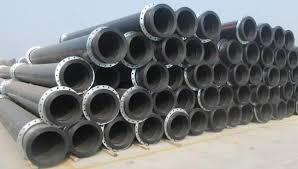Nov . 07, 2024 08:11 Back to list
China HDPE Pipe Dimensions and Sizes Guide for Various Applications and Industries
Understanding HDPE Pipe Sizes and Dimensions in China
High-Density Polyethylene (HDPE) pipes are widely used in various applications due to their excellent durability, flexibility, and resistance to corrosion. In China, the production and utilization of HDPE pipes have seen significant growth, driven by the increasing demand for infrastructure projects, irrigation systems, and water management systems. A crucial aspect of HDPE pipes is their sizes and dimensions, which vary depending on their intended applications. This article explores the standard sizes and dimensions of HDPE pipes available in China, their significance, and considerations for selection and use.
Standard Sizes of HDPE Pipes
HDPE pipes in China conform to national and international standards, such as GB/T 13663.1-2000 and ISO 4427. These standards define various aspects of pipe manufacturing, including dimensions, tolerances, and quality standards. The sizes of HDPE pipes are primarily categorized based on their diameter and pressure rating.
Typically, HDPE pipes are available in diameters ranging from 16 mm to 1200 mm. The most commonly used nominal diameters for municipal applications are 20 mm, 32 mm, 40 mm, 50 mm, 63 mm, 75 mm, 90 mm, 110 mm, and 160 mm. For larger applications, diameters of up to 1200 mm are also available.
The wall thickness of the pipes varies according to the internal pressure rating, which is categorized by PN (Pressure Nominal). For instance, the standard PN ratings for HDPE pipes include PN 4, PN 6, PN 10, PN 12.5, PN 16, and PN 20. It is essential to select a pipe diameter and wall thickness that can withstand the specific pressures and conditions of the intended application.
Dimensions and Standards
The dimensions of HDPE pipes are crucial for ensuring compatibility with fittings, valves, and other components of a piping system. The outer diameter (OD) and the wall thickness (t) are critical measurements, as they dictate fitting compatibility and installation methods.
The inner diameter (ID) can be calculated based on the outer diameter and wall thickness. For instance, if an HDPE pipe has an outer diameter of 63 mm and a wall thickness of 5.0 mm, the inner diameter would be approximately 53 mm. Proper knowledge of these dimensions aids engineers and contractors in designing efficient piping systems.
china hdpe pipe sizes and dimensions

In addition to standard diameters, HDPE pipes in China are available in various lengths. The most common lengths are 6 meters and 12 meters, but longer lengths can be produced upon request. The flexibility of HDPE pipes also allows for coiling in smaller diameters, making them convenient for transportation and installation.
Importance of Proper Sizing
Choosing the correct size and dimension of HDPE pipes is critical in ensuring the efficient operation of a piping system. An oversized pipe can lead to increased costs and inefficient flow characteristics, while an undersized pipe may result in increased pressure losses and potential system failures.
Factors to consider when selecting HDPE pipe sizes include the specific application, flow rate requirements, pressure ratings, and the environmental conditions in which the pipes will be installed. For example, a pipeline carrying potable water must adhere to strict regulatory standards concerning material quality and sizing to ensure safe and efficient water delivery.
Installation Considerations
When installing HDPE pipes, proper techniques and equipment are essential to maintain the integrity of the pipes and ensure long-lasting performance. Factors such as alignment, bedding requirements, and protection against UV exposure should be taken into account during installation.
Contractors and engineers should be familiar with the various jointing methods available, which include butt fusion, electrofusion, and mechanical fittings. The selection of the appropriate jointing method often depends on the pipe diameter, application, and specific project requirements.
Conclusion
The standard sizes and dimensions of HDPE pipes in China play a vital role in various applications ranging from water supply to agricultural irrigation and wastewater management. Understanding the significance of these dimensions and adhering to proper installation practices can ensure the success of any piping project. As the demand for HDPE pipes continues to grow, it is essential for industry professionals in China to stay informed about the latest standards, technologies, and best practices to optimize the performance of HDPE piping systems. By doing so, they contribute to sustainable infrastructure development and efficient resource management across the nation.
-
DN100 PVC Well Casing Pipes | Durable Corrosion-Proof
NewsAug.04,2025
-
HORON 25mm PPR Plumbing Pipes - AI-Enhanced & Reliable
NewsAug.03,2025
-
HORON 25mm PPR Pipes - AI-Optimized Plumbing Excellence
NewsAug.02,2025
-
Premier HDPE Sprinkler Pipe Manufacturers | Durable Solutions
NewsAug.01,2025
-
DN500 HDPE Double Wall Corrugated Drain Pipes | Durable & Efficient
NewsJul.31,2025
-
1/2' PVC Electric Protective Pipe - Durable, Lightweight Conduit
NewsJul.31,2025

